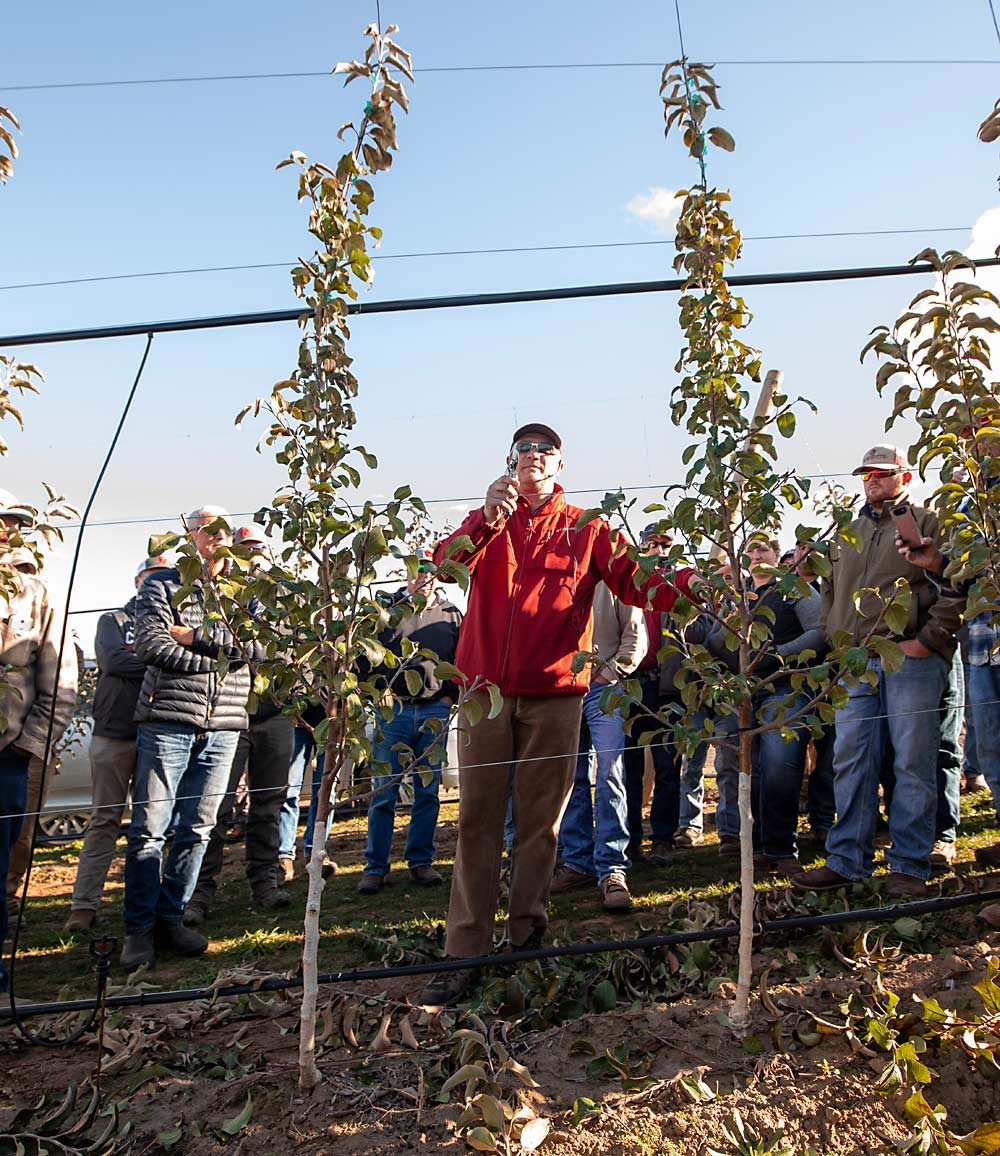
Producers have invested nearly $500 million in planting the WA 38, Washington State University’s new apple variety now in the midst of its first commercial harvest. But the industry also made hefty contributions to research that supports the rollout of the cultivar to be sold under the trade name Cosmic Crisp.
“It was equally exciting for scientists because everybody likes to have a success story,” said Ines Hanrahan, executive director of the Washington Tree Fruit Research Commission.
Since 2014, through the assessment-funded Research Commission, growers have paid for nearly $620,000 worth of projects specifically related to the WA 38. The commission staff has also done about $22,000 of its own research into how the WA 38 performs postharvest, developing a starch scale and assessing performance under different storage regimes.
For that matter, industry investment back in the 1990s is what created the Wenatchee-based breeding program that developed the apple through years and years of cross-pollination and selection, Hanrahan said.
“It could not have happened without the industry efforts all along,” Hanrahan said.
On the horticulture side, Stefano Musacchi, the WSU endowed chair of tree fruit physiology and management, was the principal investigator on most of the projects, some of which will continue into next year.

Since he arrived at his Wenatchee post in 2013, he has become well-known for bringing a Northern European pruning and training system, called click pruning, to WA 38 blocks throughout the state. The technique promotes renewal of fruiting wood and light interception in high-density canopies by heading unwanted branches back to two or three buds to encourage new growth.
Properly mixed with scoring and Promalin (gibberellic acid and benzyladenine), the strategy should mitigate blind wood, which Type 4 apical dominant trees such as the WA 38 sometimes exhibit.
“I started working on WA 38 tree management in 2013 when I arrived at WSU, and I am really happy to see fruit going on the market,” he said.
Musacchi also published a paper that tells growers how much they can crop second-leaf trees. He recommends no more than five to six apples per square centimeter of trunk cross-section area, measured at 10 centimeters above the graft union. About two-thirds of this year’s WA 38 crop will come from second-leaf orchards.
Research will continue because there will be more questions about the new apple in the future, said Scot Hulbert, associate dean for research at WSU’s College of Agricultural, Human, and Natural Resource Sciences. Musacchi is in the midst of a project about finding the optimal harvest time for WA 38 while Sara Serra, a WSU assistant horticulture professor, has started a two-year project on pollination, flower biology and fruit development in the apple.
“There’s still a lot to learn and teach growers,” Hulbert said. •
—by Ross Courtney
Related:
—Harvest of Cosmic proportions
—Click pruning techniques for Cosmic Crisp






Leave A Comment